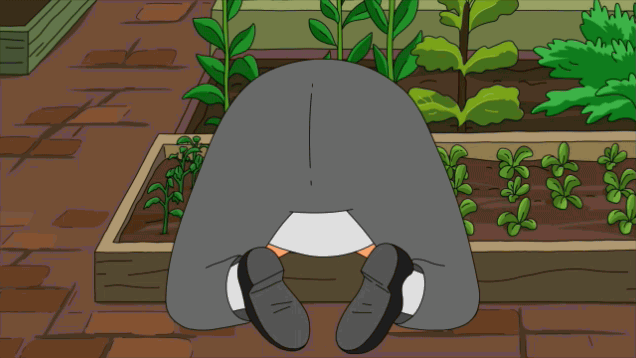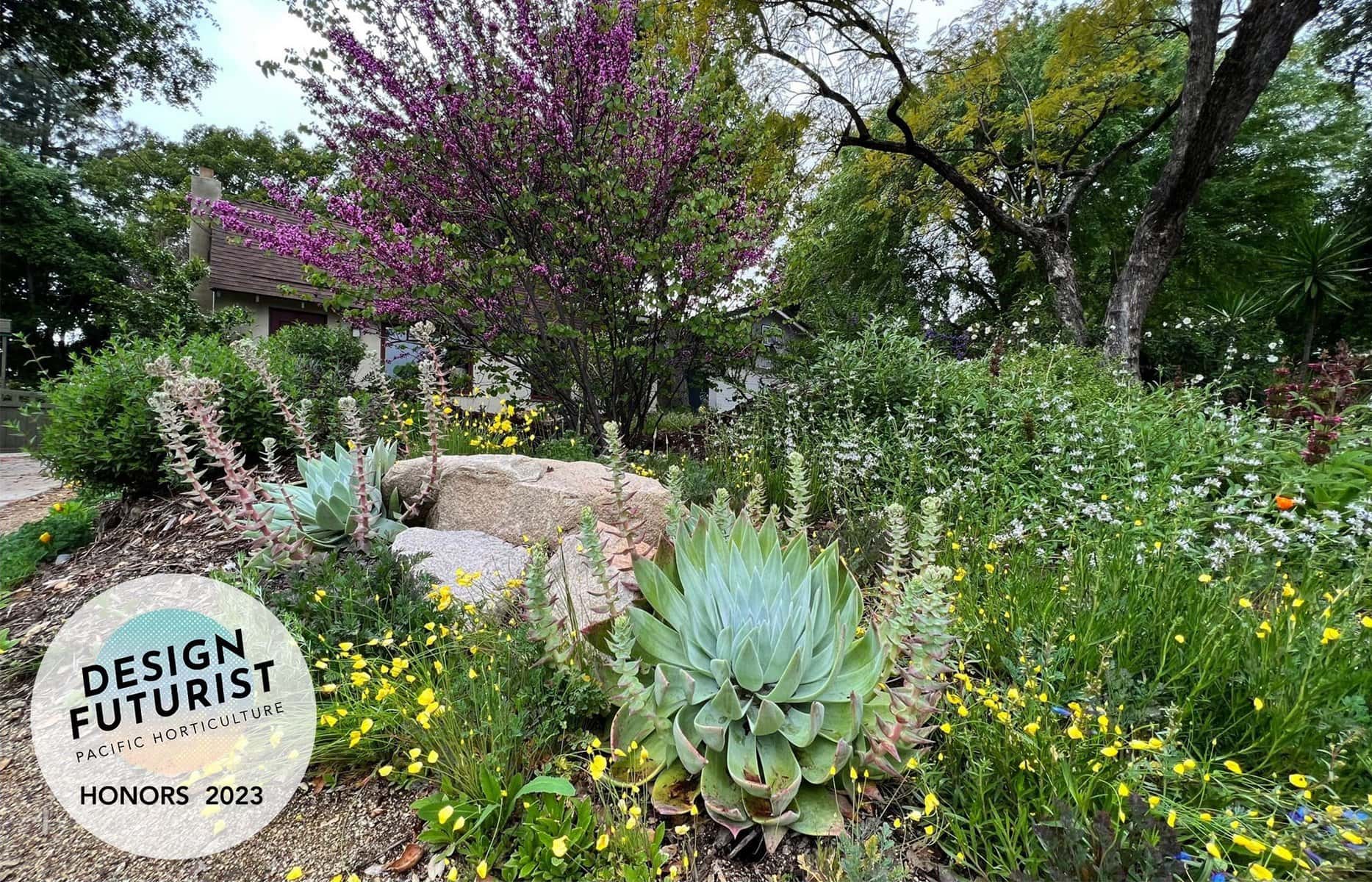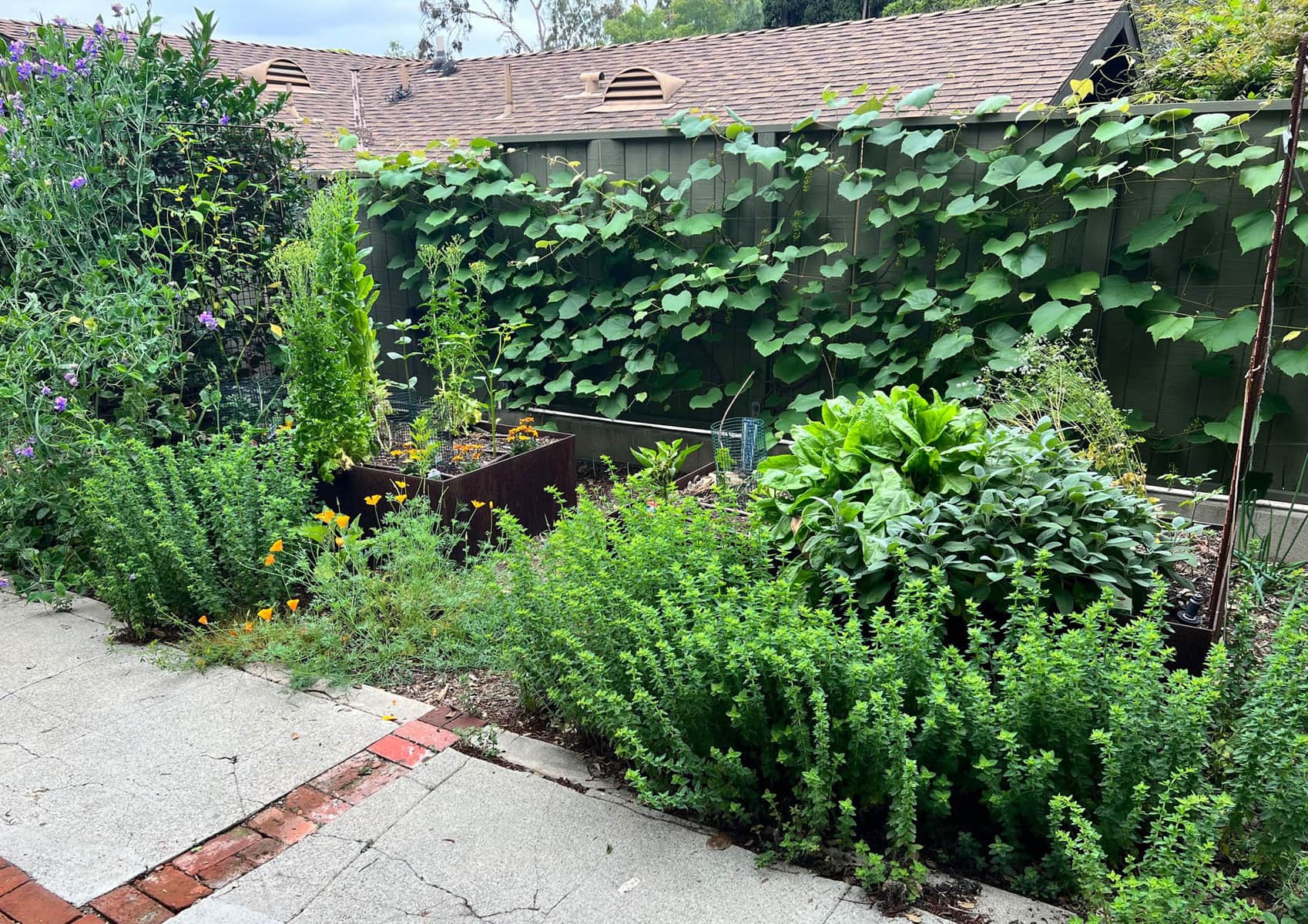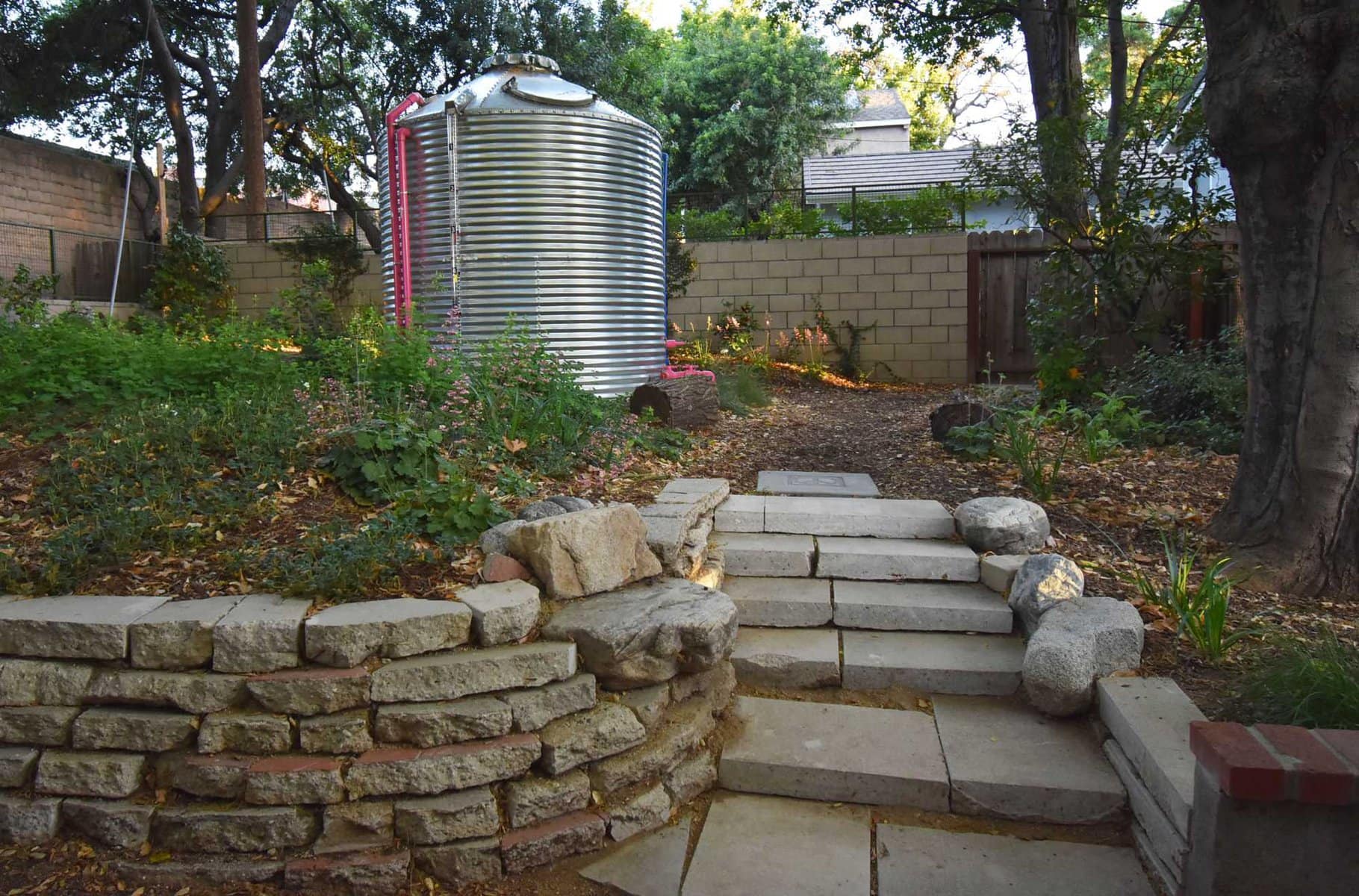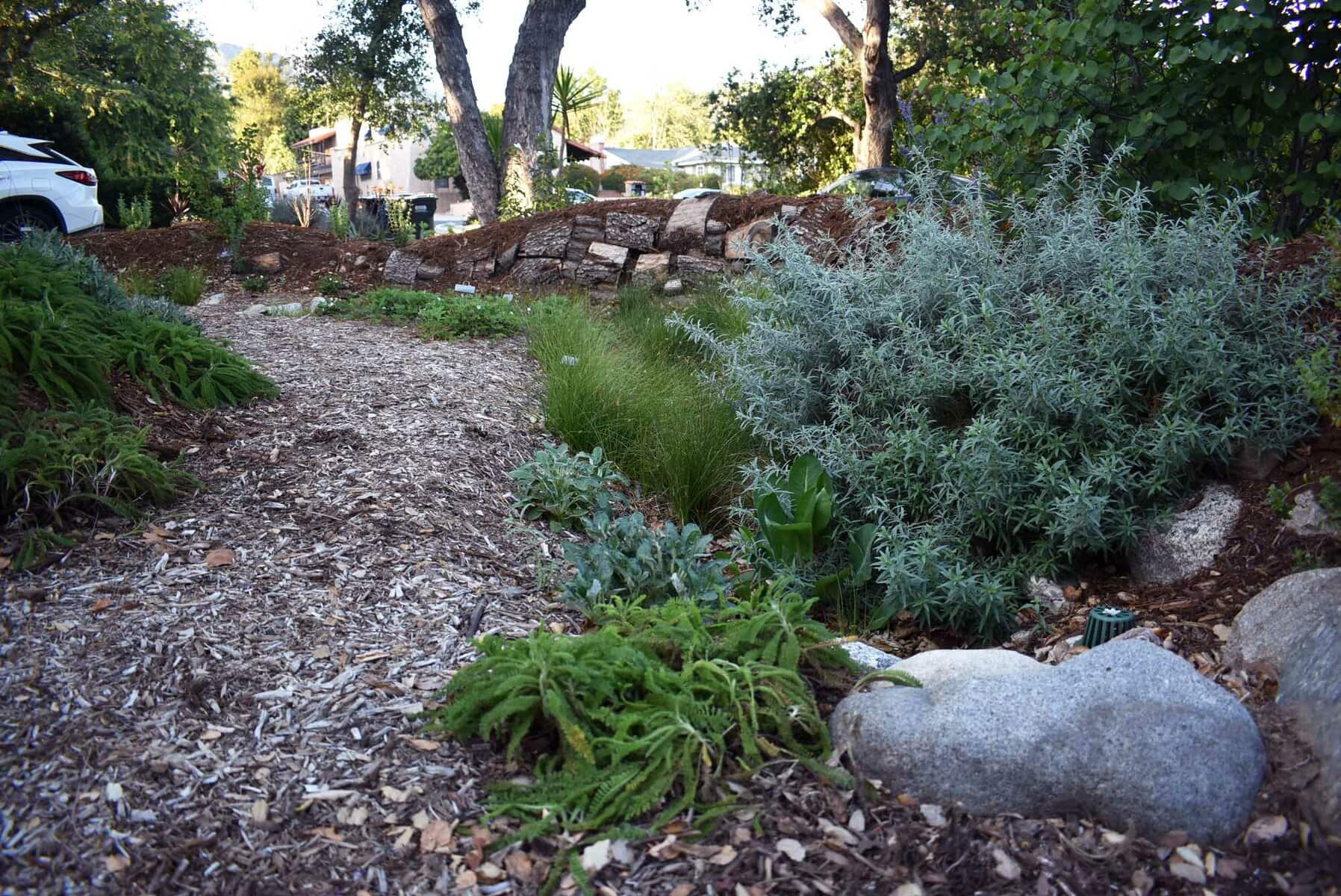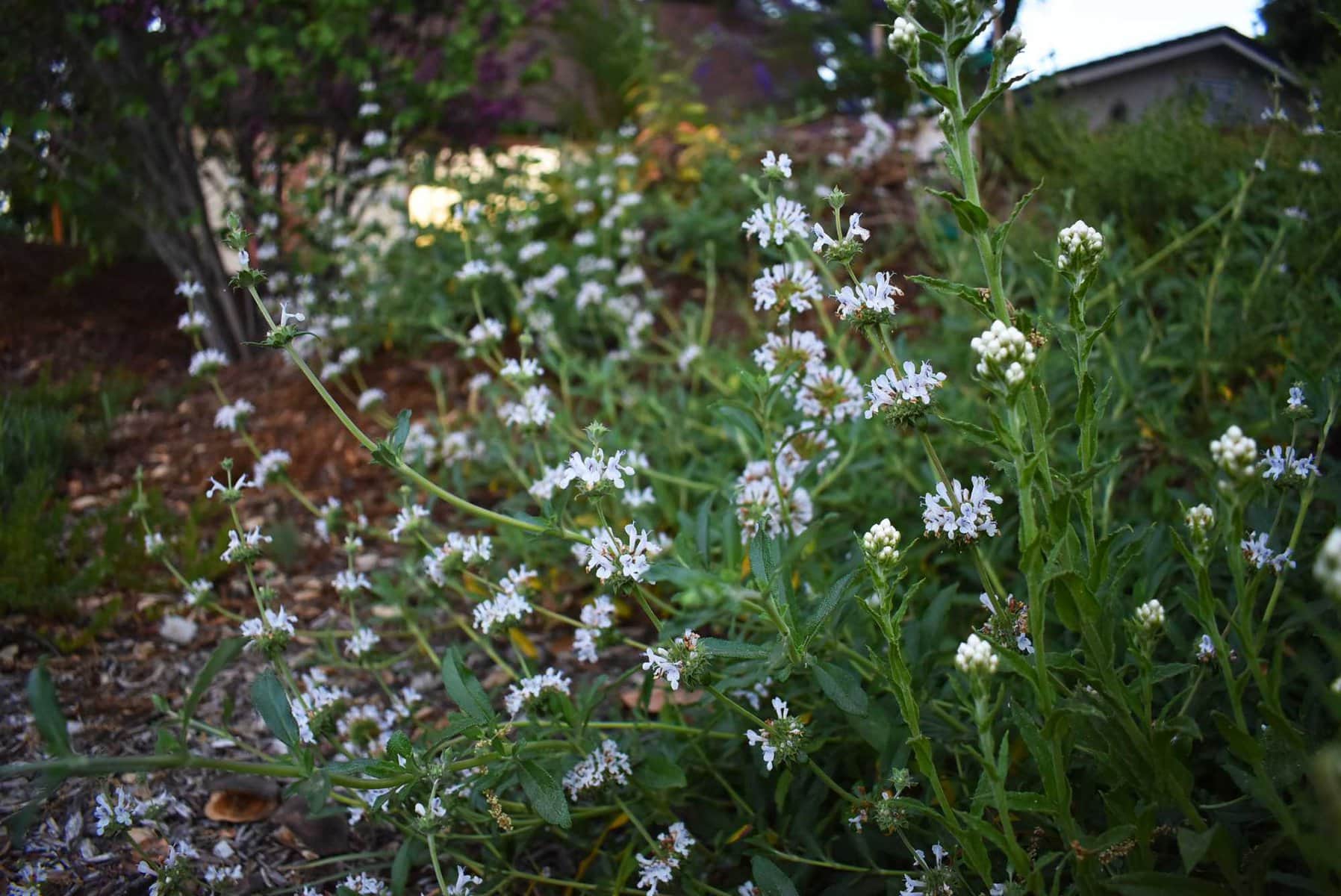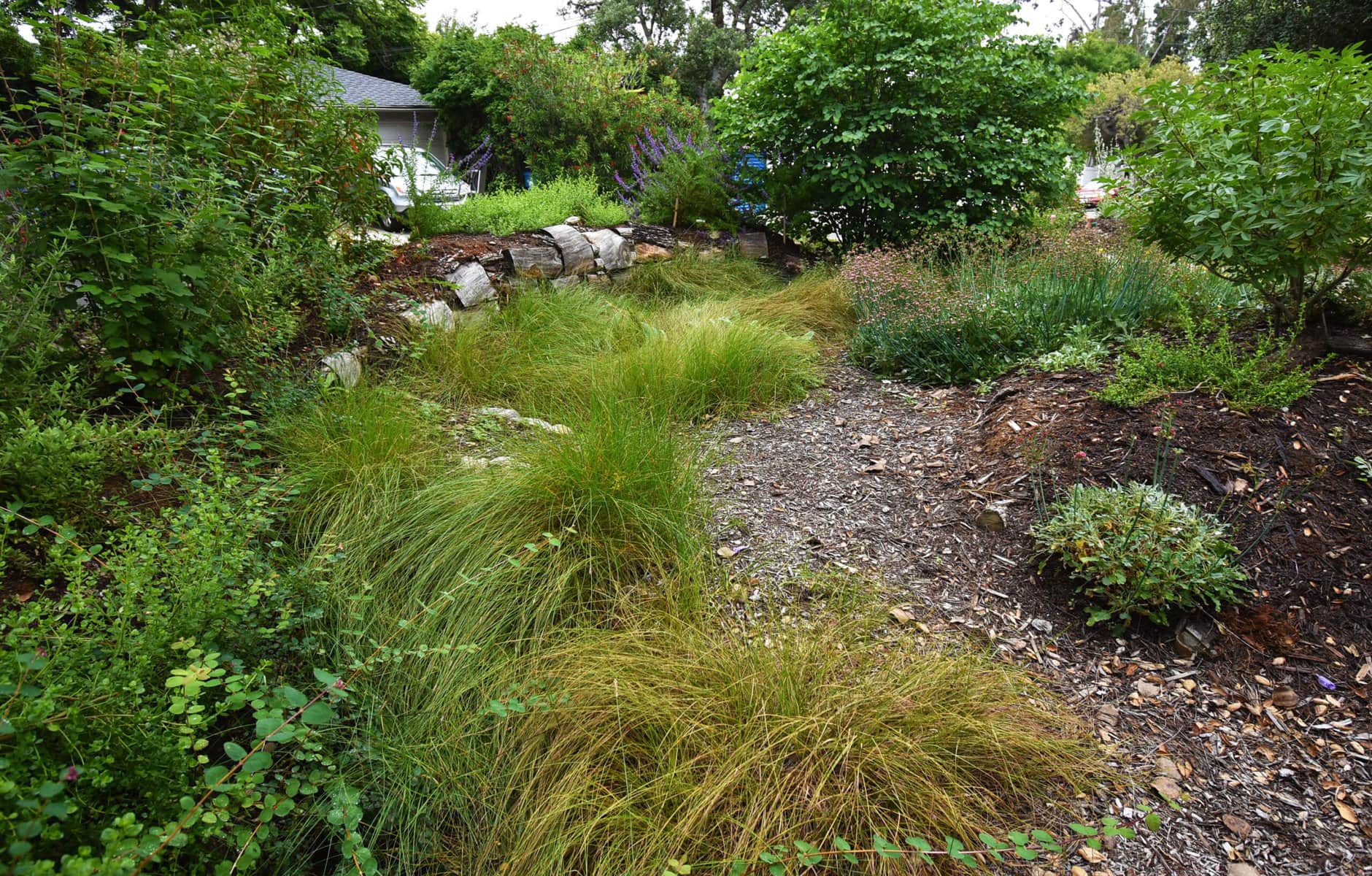A home ready for just about anything and a homeowner pushing the limits of what is possible
This charming 1925 cottage in La Cañada Flintridge is making waves in the community while supporting Mother Nature. Our client reached out to us after seeing our presentation Regenerative Landscapes and the Climate Crisis. Her goal was to make her home as “climate change-ready” as possible and we’re pleased to say that we exceeded her expectations.
Both the front and back garden naturally had a very serene quality except for one thing…the sound of traffic from the 210 freeway. Through our discussions and brainstorm sessions, our client made one thing very clear: we could do whatever we wanted in the back garden because she would never really spend time there because of the noise. WELL… now that the garden is installed, the rain tanks are full of rainwater, and the garden is growing, she couldn’t be more proud AND she does spend time there!
This garden is situated in the foothills of the San Gabriel Mountains and is planted with 90% California native plants, except for a farm garden on the south side of the house. It is already starting to attract native pollinators and other spectacular wildlife.
The greatest thing about these garden spaces is how they function. We created a truly regenerative garden that nurtures living soil, harnesses rainwater and stormwater, supports biodiversity, and so much more. Here is a breakdown of the regenerative systems installed in the garden.
Regenerative Systems
Rainwater Harvesting / Cisterns
We are harvesting 610 gallons of water from every 1” of rain on some of the roof tops. In La Cañada, the average yearly rainfall is 22”… that’s a capture potential of over 13,000 gallons. Our two tanks combined hold 5,000 gallons of rainwater. The native garden receives extra watering during the dry months to optimize the potential for this system.
Rain Gardens / Bioswales
The property next door drains into our client’s property, so we installed a rain garden / bioswale in the front garden. The amount of water that drains onto the property averages 315 gallons per inch of rain. Yearly, that comes to just under 7,000 gallons of water from the sky that stays onsite and spreads into the landscape, where native plants need it the most.
Permeability
The driveway has been sawcut and infilled with a permeable layer of bricks to optimize infiltration.
Habitat Biodiversity
Native plants are the first line of defense against loss of biodiversity.
Local Materials / Materials Reuse
The sawcut concrete from the driveway was repurposed in the landscape to build the curved wall in the back garden. Very little waste material was left at the site.
Defensible Home
Roof sprinklers and an irrigation program, or manual system, are ready to protect the home from wildfires.

